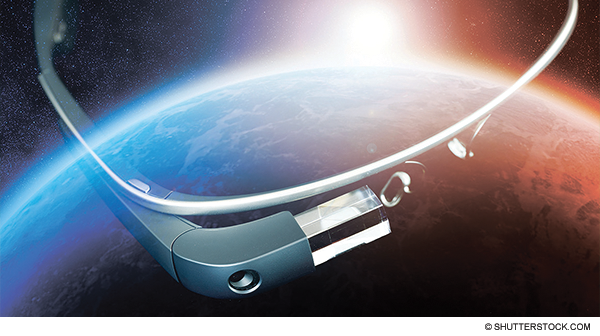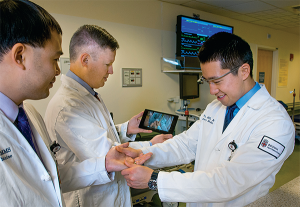
Last September, emergency physicians at Beth Israel Deaconess Medical Center in Boston began testing a new technology that may forever change the way they deliver patient care. It weighs less than a pound, instantly retrieves critical patient data and clinical information, and takes pictures and records videos that other physicians can see in real time.
Explore This Issue
ACEP Now: Vol 33 – No 07 – July 2014Google Glass made its debut last year and is already in the hands of emergency physicians at Beth Israel, Rhode Island Hospital in Providence, and Brigham and Women’s Hospital in Boston. The wearable technology is a touch- or voice-activated computer featuring an optical face-mounted display. Emergency physicians believe the device can serve as an effective diagnostic, decision-support, and patient-tracking tool, but just like with any new technology, they say it needs to evolve to reach its full potential.
At Beth Israel, a handful of emergency physicians are integrating the HIPAA-compliant device into patient care, said Terrance Lee, MD, a resident physician in emergency medicine at Beth Israel. Dr. Lee and others worked with San Francisco–based Wearable Intelligence to develop an application that would display everything from patient triage vitals to lab and radiology results on Glass.

Rhode Island Hospital emergency physicians Peter Chai, MD, Paul Porter, MD, and Roger Wu, MD, (left to right) test Google Glass’s real-time video capabilities.
Just as impressive, the device’s camera scans QR (quick response) codes displayed on the outside of every patient room. The patient’s information instantly pops up on Glass. Although the technology enables physicians to quickly access data between patient rooms and spend more time at the patient’s bedside, Dr. Lee said reactions have been mixed.
“Some [physicians] need to be more familiar with the device, especially those not tech-savvy or comfortable with computers, while others are trying it out and making it work for them,” he said. “Anecdotally, we’ve had great responses from patients of all ages … they’re intrigued by Glass and how we’re using it.”
Predicting Plenty of Potential
Before it was used in a live clinical setting, Google Glass was tested at the simulation center at Brigham and Women’s Hospital for five months. Charles Pozner, MD, an emergency physician who runs the center, and other emergency physicians have been working with several IT partners and universities, including MIT, in hopes of introducing a more mature product to the clinical environment.
“We want to be able to integrate it with some of the equipment that we use within the [emergency] department,” he said. “We’re trying to figure out what is important to put on the screen in order to make [it] the most efficient … if you put too much on the screen, ultimately, you will overwhelm the clinician and maybe make things even worse.”
Pages: 1 2 3 | Single Page






No Responses to “Google Glass May Help Emergency Physicians Improve Patient Care”